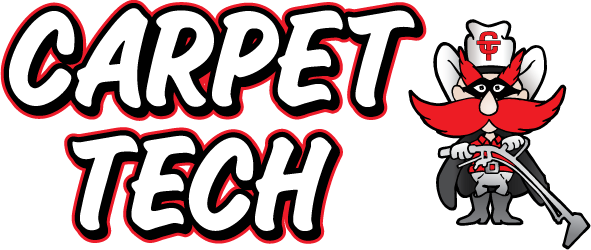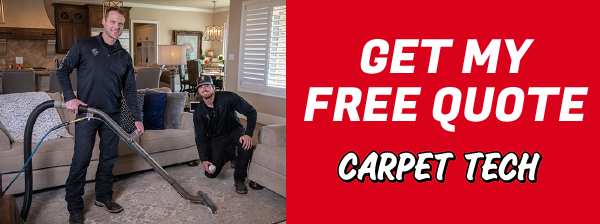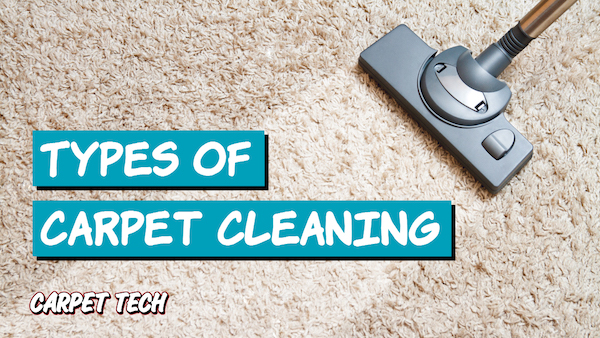
Carpets can add a warm, plush, and comfortable aesthetic when it comes to your commercial or residential décor. Appealing as they may be, carpets can get dirty quickly–especially in high-traffic areas in your home or office. Various stain resistant treatments can help prevent or reduce stains, but these won’t protect your carpets from everything. Chances are, no matter how clean you keep your property, carpets are often susceptible to mud, grime, and dirt.
On top of attracting mud and dirt, your carpets will also collect significant amounts of dust and bacteria over time. These dust and bacteria particles then become trapped deep into your carpet’s fibers. The trapped contaminants are not only unhygienic but can also impact the health of your family or staff members. If left, dust and bacteria can lead to severe allergies, asthma, sinus problems, and even breathing difficulties.
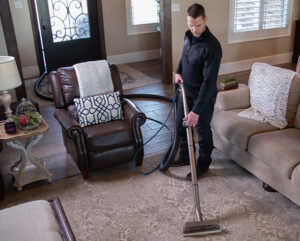
Professional Carpet Cleaning Methods
Despite your best cleaning efforts with regular vacuuming and scrubbing, it’s likely you will be unable to completely remove all of the stains, dust, and bacteria that collect in your carpet with regular household cleaning methods and materials. This is why it’s so important to get your carpets professionally cleaned at least twice a year. On top of making your carpets look like new again, IICRC certified carpet cleaning like Carpet Tech can help provide a cleaner and healthier environment for you and your loved ones.
At Carpet Tech, we offer both commercial and residential carpet cleaning using our hot water extraction or steam cleaning method. . Carpet Tech uses a hot water extraction process only using professional, state-of-the-art truck mounted equipment. Our water is deionized, purified, and cleaner than your tap.
Residential Carpet Cleaning Methods
We recommend a professional residential carpet cleaning every 4-6 months to adequately tackle the day-to-day wear and tear from kids, pets, weather, and more.
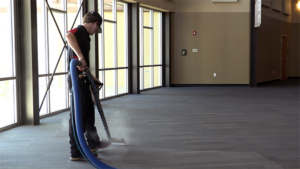
Commercial Carpet Cleaning Methods
Is your office always busy with people in and out all the time? Imagine the dirt, dust, and bacteria that clients and staff members bring in with their shoes! This is why it’s essential to have your office carpets professionally cleaned on a regular basis.
So, now that we’ve covered why it’s essential to have your carpets regularly cleaned by professionals, what is the best cleaning method available? With several different ways to clean your carpet on the market, it can be a little overwhelming to choose the best and most effective option for your needs.
As you can imagine, each professional cleaning method has its particular advantages and disadvantages. To help you out, we explore the most popular cleaning methods and uncover the pros and cons of each.
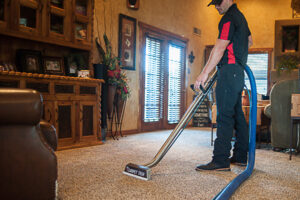 Steam Carpet Cleaning / Hot Water Extraction
Steam Carpet Cleaning / Hot Water Extraction
One of the most widely used carpet cleaning techniques is steam carpet cleaning or hot water extraction cleaning. When it comes to steam carpet cleaning, high-pressure hot water is used to infiltrate the carpet’s fibers and dissolve any dust or dirt deep within the carpet. Water is heated to near boiling point and pressurized, which is then injected into the carpet. Steam cleaning involves an application of a powerful cleaning agent followed by deep-cleaning equipment to loosen the build-up of stains, pollen, and other particles.
Because this cleaning method involves steam or hot water, the carpets will need to be left to dry overnight. Ideally, you will need to prevent your family and pets from walking on the freshly-cleaned carpets until they are completely dry.
When it comes to cleaning carpets in a commercial space, cleaning companies will recommend that carpets be cleaned in the late afternoon or early evening so that they can be left to dry overnight. This way, by the next morning, the carpets should be 100% dry, and business operations can resume as per usual.
Because the hot water used in this process heats to 220 degrees, steam cleaning your carpets also disinfects them, killing harmful germs and pathogens.
Pros and Cons of Steam Carpet Cleaning
Pros
- Removes deep and hard-to-reach stains within the carpet fibers
- It incorporates the use of hot temperatures, high pressures, and strong chemical concentrates.
- It allows for extended dwell times for the reaction of cleaning solvents to dissolve stains and dirt
- Disinfects, killing germs and harmful pathogens
- Doesn’t shrink your carpet, or cause damage
Cons
- It involves a relatively long drying time, but this can be reduced with specific equipment and techniques
- Depending on the time of day, this method may disrupt regular home or office happenings. Carpet Tech will schedule after hours cleanings to meet your commercial operation’s schedule.
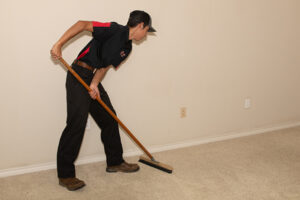
Dry Carpet Cleaning
Dry carpet cleaning (also known as extraction cleaning or compound cleaning) is one of the more recent cleaning technologies found on the market. As the name suggests, it doesn’t use water, so many people and organizations prefer this technique when it comes to cleaning their carpets.
The cleaning powder is spread onto the bottom of the carpet using a machine. This opens the carpet’s fibers and lets the powder settle there, resulting in deeper carpet cleaning. The carpet then gets vacuumed to remove the dirt and powder.
So how does it properly clean carpets without water? A cleaning compound made of biodegradable material works like micro-sponges, which can effectively absorb and dissolve dirt. After 10-15 minutes, the cleaning solvent is vacuumed up, removing the dirt and stains with it.
Pros and Cons of Dry Carpet Cleaning
Pros
- It is a straightforward and very effective cleaning solution to commercial and residential properties
- No drying time is required
- It is more economical and also helps to save water throughout the carpet cleaning process
Cons
- Because it is relatively new and doesn’t use water, some customers are not entirely convinced of its capabilities
- This modern method is unable to clean very deep down into the carpet
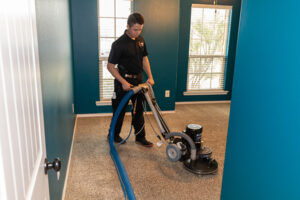 Bonnet Cleaning
Bonnet Cleaning
Unlike more deep cleaning methods, bonnet cleaning focuses on sprucing and freshening up the top layers of a carpet. Ordinarily, bonnet cleaning involves a heavy-duty machine with a spinning pad that has been dipped in a cleaning solution to absorb dirt from the carpet’s top surface layers. After that, the cleaning technicians attach the absorbent pad to the floor machine, and the process will get rid of soil and dirt from the carpet’s surface.
This method is ideal for organizations such as hotels or hospitals looking for a fast solution that quickly and effectively washes carpets without disturbing the clients or visitors. Often the top choice for quick and routine maintenance, bonneting is a popular option given its overall effectiveness and convenience. It’s important to note that bonneting doesn’t deep clean carpets, which means dirt deep beneath the carpet’s surface is likely to return to the top surface over time.
The carpet is first vacuumed, followed by a chemical solution sprayed onto it with either a hand pump or an electric sprayer. The solution needs to sit on the carpet for a suitable dwell or reaction time. The absorbent pad or bonnet is placed underneath a rotary floor machine and rapidly spun over the carpet surface. This action helps to infiltrate the carpet fibers with the chemical solution while simultaneously picking up superficial dirt and debris.
Pros and Cons of Bonnet Cleaning
Pros
- It offers a fast, simple, and inexpensive solution
Cons
- It only provides superficial cleaning and does not deep clean carpets
- The resulting cleanliness and freshness doesn’t last for extended periods of time
- Sometimes dirt and chemicals accumulate at the bottom of the carpet fibers if not done correctly
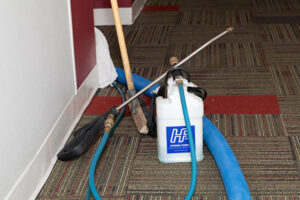
Shampoo Carpet Cleaning
A cleaning shampoo is applied to the carpet, and after a short dwell time, the foam is extracted with a vacuum. This generates a foam, which is worked into the carpet fibers with a special machine’s rotating brushes. The carpet is then thoroughly vacuumed to remove the dirt and excess shampoo and foam.
While still popular, this method can leave behind a significant amount of wet foam residue on carpets if not done correctly by professionals. This technique also takes a substantially long time to dry compared to other cleaning methods. Plus, if a substance is spilled or walked into the carpet while it is still wet, it can easily re-spoil. These factors can make shampoo cleaning a less popular choice for many home and business owners.
Pros and Cons of Shampoo Carpet Cleaning
Pros
- When a small amount of moisture is used it can allow for fast drying
Cons
- Unable to achieve complete soil extraction below the deep surfaces of the carpet
- High temperatures are usually not achieved
- Excessive drying time and increased possibility of re-soiling
What is the Best Method to Clean Carpets?
This, of course, is the age-old question. At the end of the day, the best way to professionally clean carpets comes down to personal preference and individual experience that comes with using each method.
Which is Better – Steam or Dry Carpet Cleaning?
Many professionals believe that steam cleaning is still the best way to remove stubborn stains and harmful bacteria. The high-temperature of the water offers a better, deeper, and more hygienic clean.
What are the Different Types of Carpet Cleaning Machines?
Today many different types of commercial carpet cleaning machines are available on the market. Naturally, these are heavy-duty cleaning machines designed to endure excessive use and long cleaning sessions. Industrial cleaning machines can be broken down into vacuums, steam cleaners, dry cleaners, shampooers, and bonnet spinners, to name just a few. Depending on your individual business needs, each type of carpet cleaning machine offers unique and useful functionalities.
What Kind of Carpet Cleaners do Professionals Use?
Like choosing the right machinery, there is also a wide range of professional cleaning solvents suitable for at-home or in-office use. However, because these cleaning solutions are professional-grade, they can be quite harsh and damaging if they are not used with the correct machinery or by trained professionals. So, be sure to do substantial research and find a professional-grade cleaner that you can safely use at home or at your office.
DIY Carpet Cleaning
Many homeowners pride themselves on the ability to get just about any tough stain out of their carpets. Plus, modern cleaning supplies and vacuums have come a long way in helping to keep our homes clean and hygienic. While DIY carpet cleaning does have its many benefits, household cleaning materials and store-bought equipment cannot replace the industrial-strength solvents and heavy-duty, truck mounted machinery that professionals use. With the help of professional equipment and cleaning agents, trained technicians can get to all those hard-to-reach areas and clean deep into your carpet’s fabric without damaging the fibers or oversaturating the carpet.. Therefore, providing a much more effective and hygienic clean.
Is it Worth Getting Carpets Professionally Cleaned?
While it may be an additional cost that you need to add to your annual household budget, professional carpet cleaning is well worth it, especially if your family or loved ones suffer from allergies or have weakened immune systems. With the recent increase in the spread of harmful bacteria and viruses, professional carpet cleaning is just another way to help keep viruses and bacteria out of your home or office. Did you know that the Center for Disease Control and Prevention (CDC) recommends cleaning your carpets regularly when it comes to cleaning and disinfecting your home? At the end of the day, your carpets are an investment that needs to be taken care of. If you don’t prolong their lifespan with professional cleaning, you may have to fork out extra money to replace your carpets sooner than expected–costing you more in the long run.
